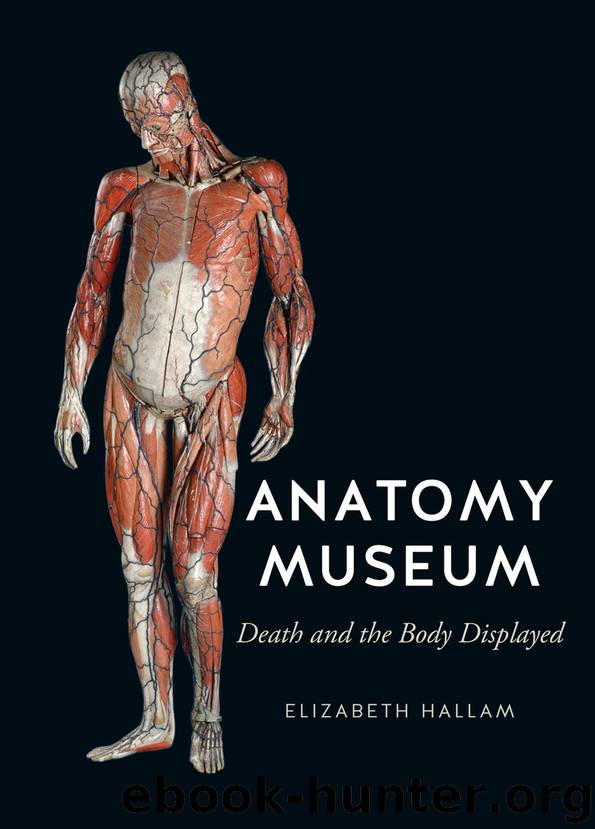Anatomy Museum by Elizabeth Hallam

Author:Elizabeth Hallam
Language: eng
Format: epub
Publisher: Reaktion Books
During the early 1930s in Birmingham, Lockhart had been assisted by acrobats from two troupes known as the Mid-Air Girls and the Hindustans who were appearing at the Theatre Royal in the pantomime Dick Whittington. He recruited them for his ‘scientific investigation into the movements of joints and the actions of muscles . . . carried out by X-ray, cinematograph and anatomical experiment’.88 Photographs, radiographs and films were made to reveal the skeletal structure of the acrobats and their muscles during movement. As Lockhart would announce at the start of his ‘Circus of Life’ lecture, such anatomical images allowed him to present ‘the glamour of the footlights in the cold shadow of the radiogram’.89
By replacing stage or show lights with the X-ray and other imaging technologies, Lockhart displayed performing acrobats as anatomical images that converted theatrical bodily acts into educational exhibits. Directed by the anatomist, two artistes from the Mid-Air Girls – Doris Smart and Babette, both with expertise in bending and balancing – ‘faced the cinematograph camera’ as described in a press article, and the Hindustan Troupe of ‘young men of fine physique’ were also filmed with special attention to ‘the flexing and relaxing of their muscles’. The resulting images were expected to provide anatomy students with an instructive ‘demonstration of muscle play’.90 Such an approach to bodily display was also employed in other medical schools: professor of anatomy David Rutherford Dow, in Dundee, invited a ‘lady contortionist’ from her local stage venue to his lecture theatre to demonstrate her muscular anatomy; professor Thomas Yeates displayed a heavyweight boxer’s muscles to an anatomy class at the Middlesex Hospital Medical School; and anatomy lecturer Dr A.J.E. Cave took X-ray photographs of Babette, from the Mid-Air Girls, to aid his teaching on the muscles of the neck and back at the University of Leeds.91 Lockhart continued to display images derived from acrobatic performance so that, for instance, a photograph of a young woman performing a ‘perfect high kick’ was included in his 1948 photographic atlas, Living Anatomy, to demonstrate the ‘relaxation of the hamstring muscles’.92 Images of ‘muscle play’, then, were shown in lectures and in book format to stimulate students’ study of living bodies and to provide visual material that they could use to better interpret museum specimens.
The visual analogies that Lockhart set up between photographs of popular body displays and skeletal anatomical exhibits were particularly instructive. While his anatomical practices drew performers – from acrobats to ballet dancers – into his research, especially on the movements of joints and the ‘mechanism of walking’, he also collected images of catwalk fashion models, music hall dancers, gymnasts, athletes and aerialists from newspapers, magazines and journals to project as slides in lectures.93 By displaying photographs of trained, muscular bodies in action Lockhart encouraged students to view human and animal skeletons in terms of how they worked during life, and so to imagine bones ‘clothed in their related structures’.94 Just as photographs of circus horses in rearing motion were projected and described in
Download
This site does not store any files on its server. We only index and link to content provided by other sites. Please contact the content providers to delete copyright contents if any and email us, we'll remove relevant links or contents immediately.
| Anatomy | Bacteriology |
| Biochemistry | Biostatistics |
| Biotechnology | Cell Biology |
| Embryology | Epidemiology |
| Genetics | Histology |
| Immunology | Microbiology |
| Neuroanatomy | Nosology |
| Pathophysiology | Physiology |
| Virology |
Tuesdays with Morrie by Mitch Albom(4727)
Yoga Anatomy by Kaminoff Leslie(4331)
Science and Development of Muscle Hypertrophy by Brad Schoenfeld(4102)
Bodyweight Strength Training: 12 Weeks to Build Muscle and Burn Fat by Jay Cardiello(3938)
Introduction to Kinesiology by Shirl J. Hoffman(3743)
How Music Works by David Byrne(3232)
Sapiens and Homo Deus by Yuval Noah Harari(3025)
The Plant Paradox by Dr. Steven R. Gundry M.D(2579)
Churchill by Paul Johnson(2541)
Insomniac City by Bill Hayes(2517)
Coroner's Journal by Louis Cataldie(2454)
Hashimoto's Protocol by Izabella Wentz PharmD(2348)
The Chimp Paradox by Peters Dr Steve(2337)
The Universe Inside You by Brian Clegg(2113)
Don't Look Behind You by Lois Duncan(2099)
The Immune System Recovery Plan by Susan Blum(2040)
The Hot Zone by Richard Preston(1995)
Endure by Alex Hutchinson(1992)
Woman: An Intimate Geography by Natalie Angier(1908)
